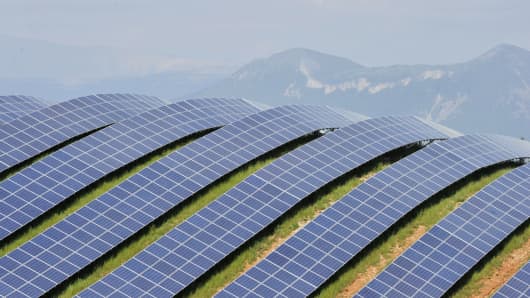There is a growing realization that the world of energy—the lifeblood of our global economy—is entering a period of profound transformation as new technologies and innovations challenge long-held expectations and reshape the energy balance.
The sources of this transformation and its impact on our energy world will be the focus this week as more than 2,200 participants from more than 50 countries convene in Houston for the 32nd IHS CERAWeek energy conference.
This year's conference, which I chair, is called Drivers of Change for it is about understanding the new technologies, sources of energy and shifts in global demand that are remaking the map of energy.
Indeed, many of these transformative developments would not have been contemplated just a few years ago. One of these is the growing realization that the United States is in the midst of a "revolution" in unconventional oil and gas production.
(Read More: Natural Gas Boom Brings Environmental Concerns)
The technologies that first unlocked more than 100 years worth of natural gas supply in the form of shale gas have now been applied to recovering so-called tight oil trapped in the rock formations of North Dakota and south Texas. It is now also being applied in what were regarded as mature oil fields. This oil production is largely responsible for boosting U.S. oil production by 40 percent since 2008—the highest growth in oil output of any country in the world over that time period.
But the extent of this revolution goes beyond energy itself. Today, unconventional oil and gas production supports 1.7 million U.S. jobs—a considerable accomplishment given the relative newness of the technology. That number could rise to 3 million jobs by 2020.
All this growth has also driven renewed focus of the importance of energy infrastructure, as existing logistics attempt to keep up with new sources of supply. It has also spurred discussion on a topic that would have been unheard of just a few years ago—that of the U.S. as an energy exporter.
How and when this revolution will spread to other continents is a growing area of focus on the world stage.
(Read More: A Bounty of Natural Gas From Barnett: Survey)
At the same time, the push for renewables continues, although now made more challenging by austerity in national budgets. Here too the focus is on innovation—driving down costs, improving output and increasing scale. Wind already is really no longer an "alternative", but more of another "conventional" way of generating electricity.
All this is leading to a vigorous discussion of how the energy needs of a growing world economy will be met over the next two decades and what the mix will be among today's major sources, renewables – and, perhaps, in ways not yet imagined. Will an "energy transition" unfold over years or over decades?
The one constant will be innovation. Along with market forces, overall economic performance and and government policies, innovation will shape the energy mix of the future amid growing concerns about climate change and the need to meet continued growth in energy demand led by emerging markets Moreover, there are still 1.3 billion people in developing countries who have no access to modern sources of energy.
(Read More: Finding an Edge in America's Booming Energy Market)
The new drivers of change are just beginning to come into focus. How they will transform our energy world remains to be seen. That is what will be explored when leaders from the energy, policy, and financial communities from around the world gather at IHS CERAWeek 2013.
Daniel Yergin is the vice chairman of IHS and author of The Quest: Energy, Security and the Remaking of the Modern World. He is the chairman of IHS CERAWeek, the world's pre-eminent energy conference.


